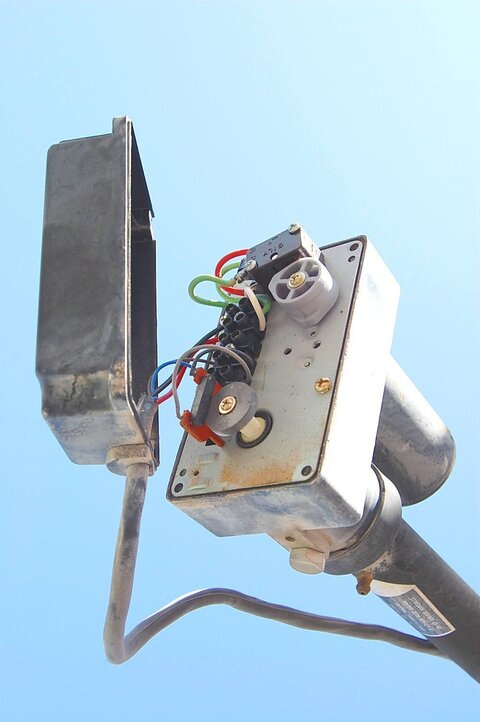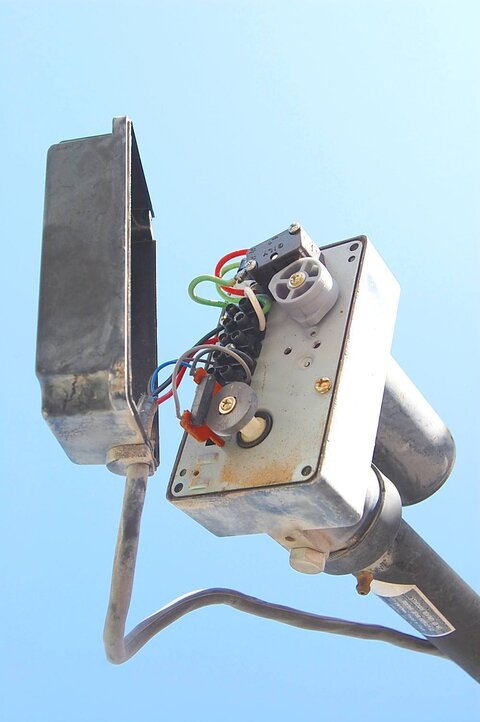From close up, I can see that neither limit is being reached, although one is much closer to hitting one of the little prongs on the microswitch than the other. I assume the closer one is the West limit, based on observed current antenna position. Both poles of the microswitch are currently resting at normally open position, so I can easily slip a small screwdriver under either one to simulate reaching the limit. Now I have to go up and check out these three things:
1. is the microswitch functioning properly
2. is the reed sensor generating any pulses
3. do the wires pass a continuity check
---------------------------------------------------- up the scaffold ------------------------------------------------
Ok, we're back down. I went up the scaffold, youngest son went up the ladder to the point where I connected new wires several months ago. The box was still two feet over my head, but we cut the blue wire at his ponit and got good continuity on the reed sensor wires. Everything else was difficult because the scaffold is too low. I will be going back to Mr. Scaffold Monday morning, and I'll rent another section for height. While waiting for Monday (and re-enforcements: my middle son will be home), can anyone tell me what instrument to use in order to measure the output from a reed switch? Here's what we tried:
1. disconnected both leads from the reed switch
2. hooked up extension wires to bring the work down to my level on the scaffold
3. hooked my Sperry digital multimeter to the wires, set for 20 volt DC scale
4. called my son on walkie-talkie to move dish East - no noticeable reading
5. set scale to 2 volts DC, tried again - no reading
Okay, the reed sensor probably doesn't make DC
6. set scale for 200 volts AC, tried moving dish again - still no reading, scale too high?
7. I have no lower AC volt range so, what the heck, it's out of the circuit, set to 200 ohms scale
8. called my son to move dish West, did I see a change in resistance? This can't be right
9. called my son, moved West again. It must be the loose connections
What the heck does the reed sensor generate? What are the "pulses" made of?
Do I have to rent an O'scope?
Can somebody give me some guidance on this reed sensor thing? Thanks!!




